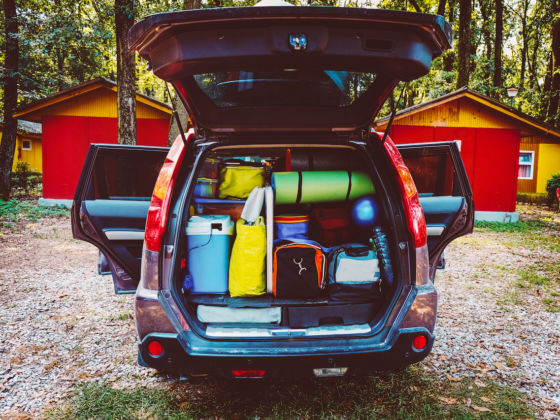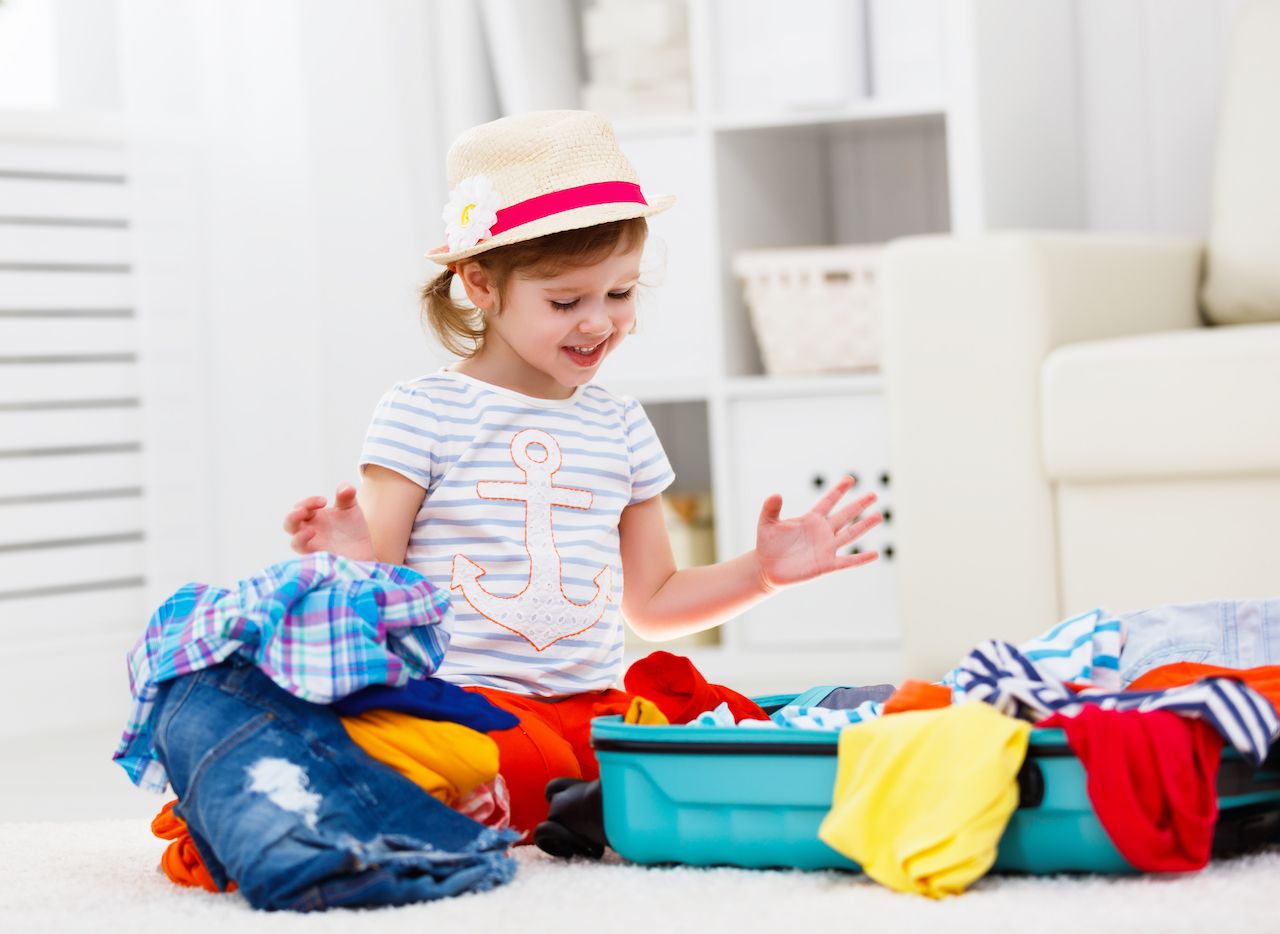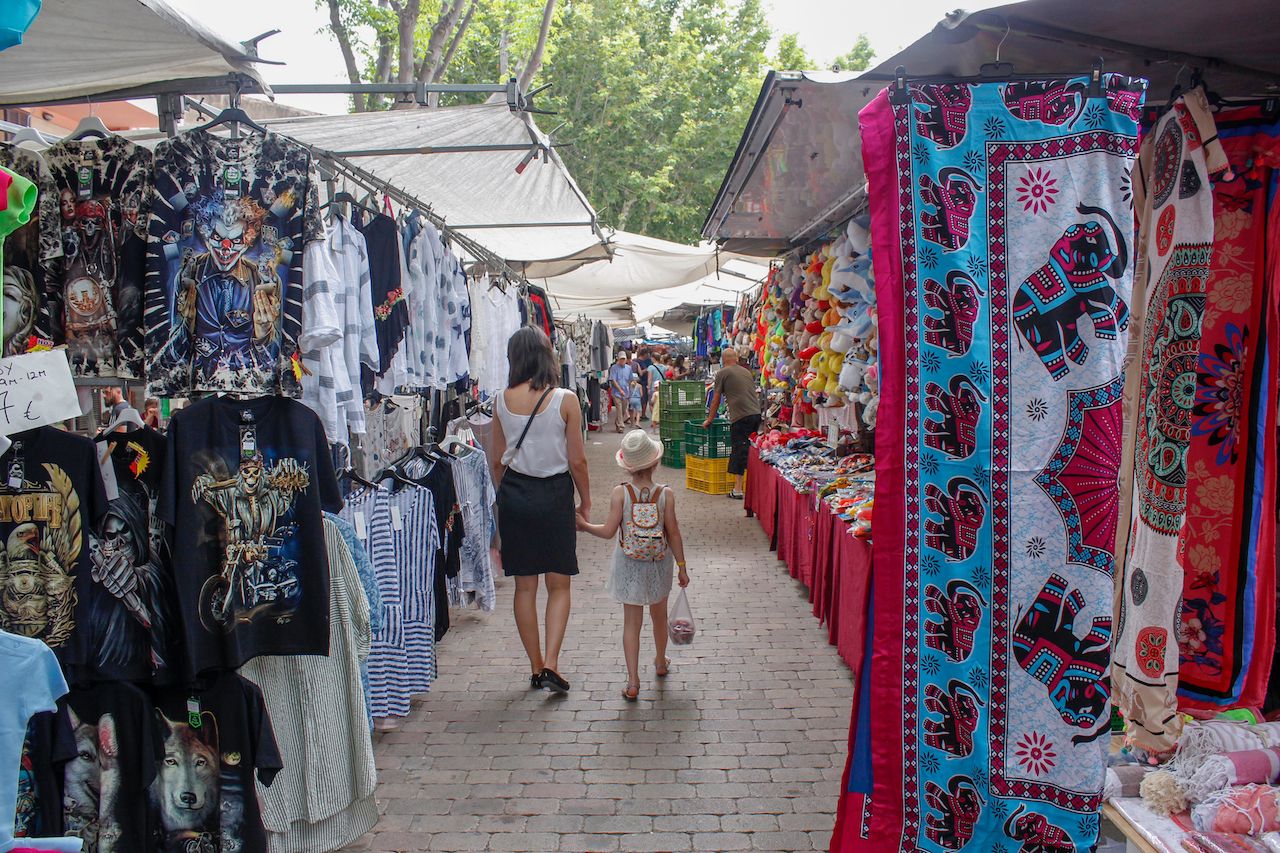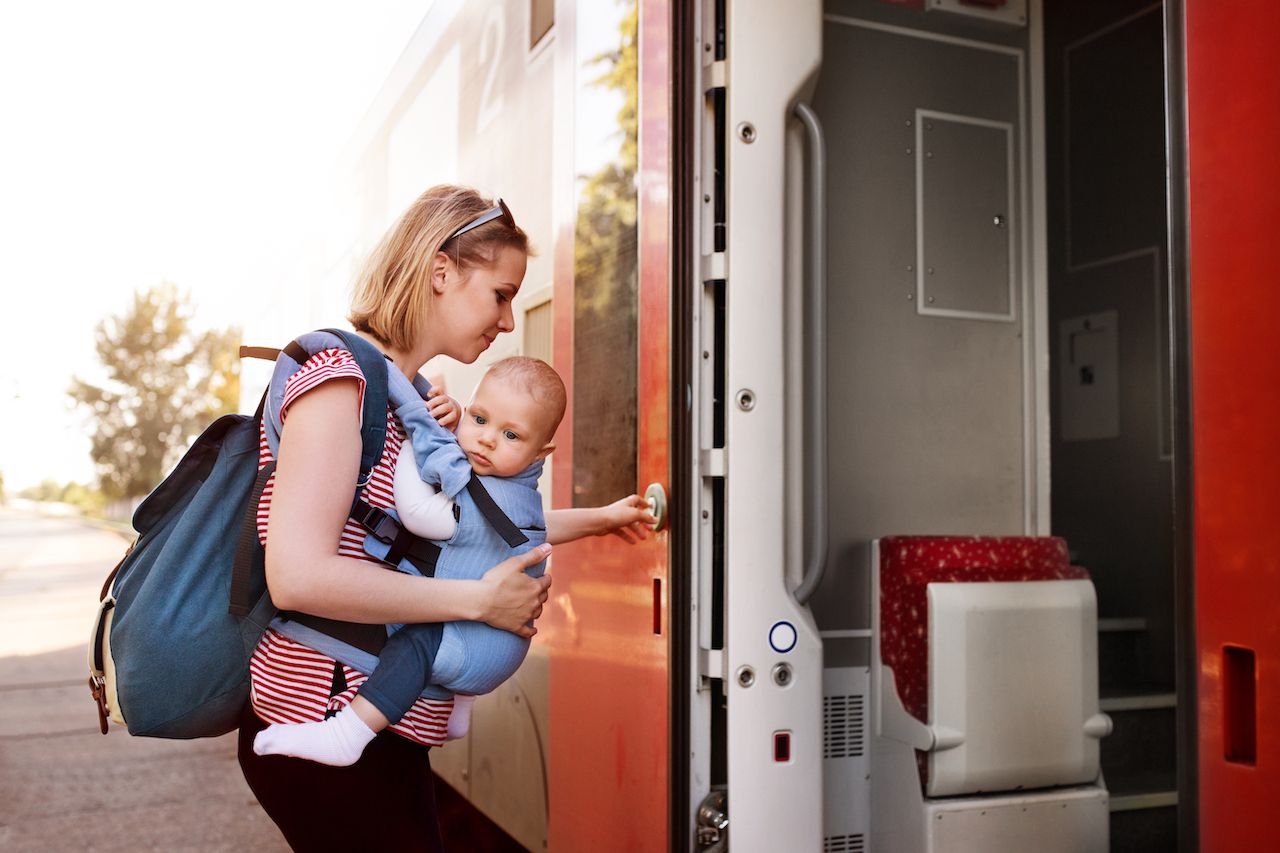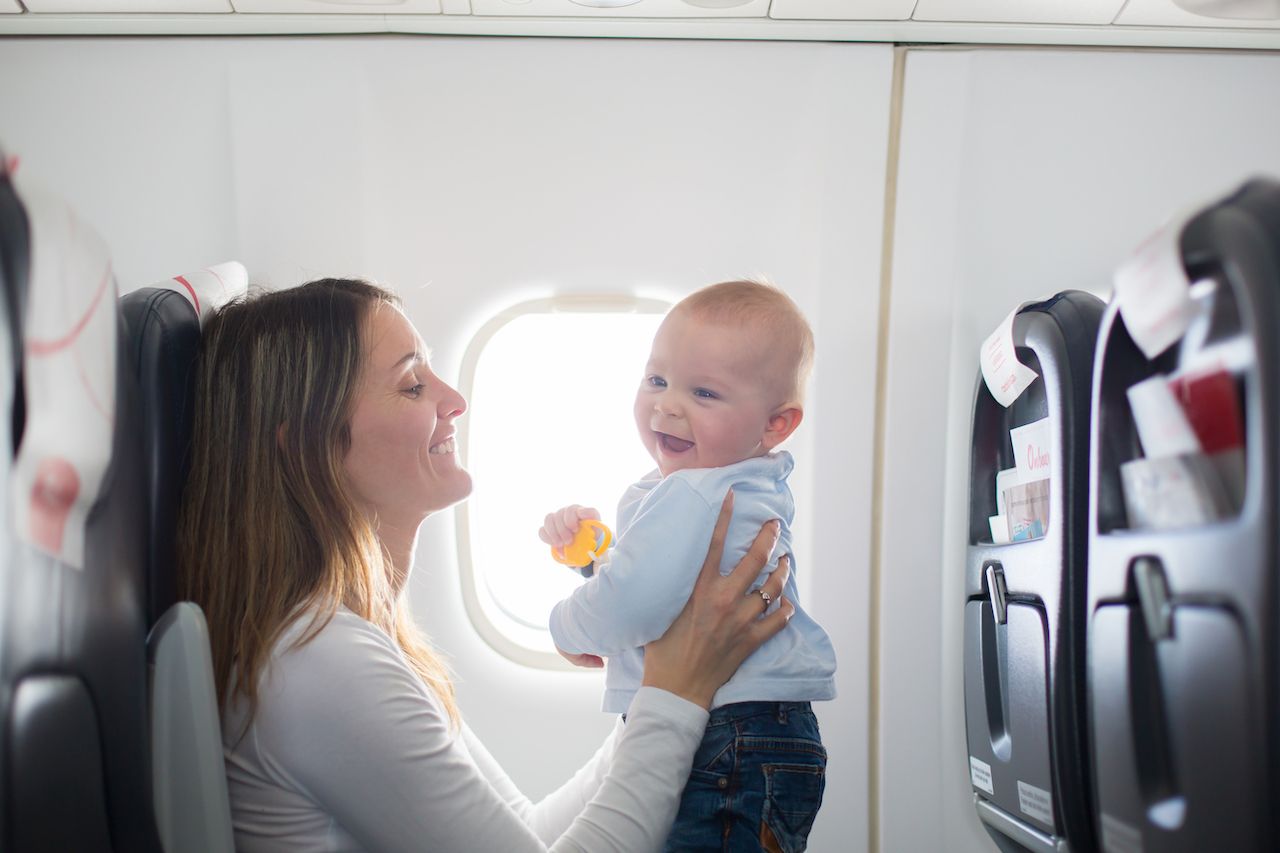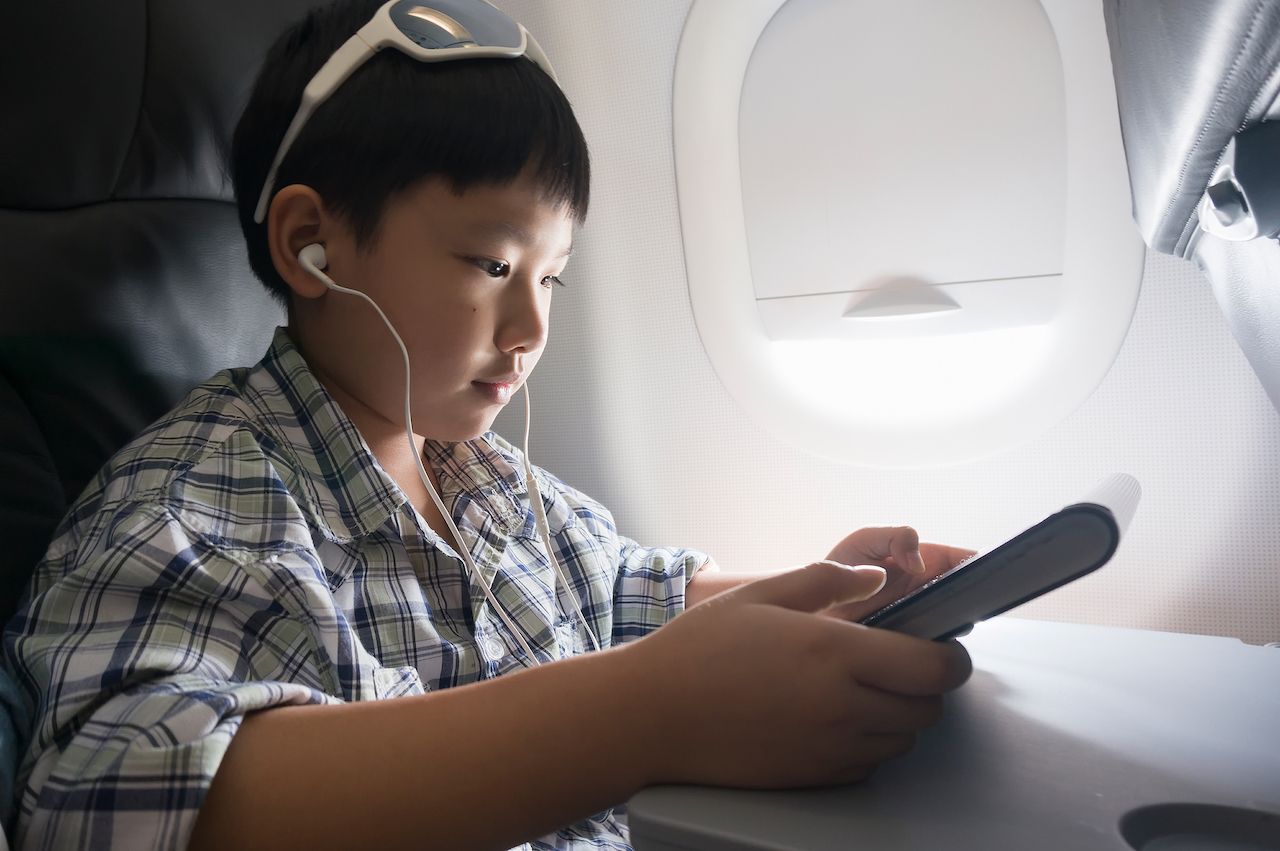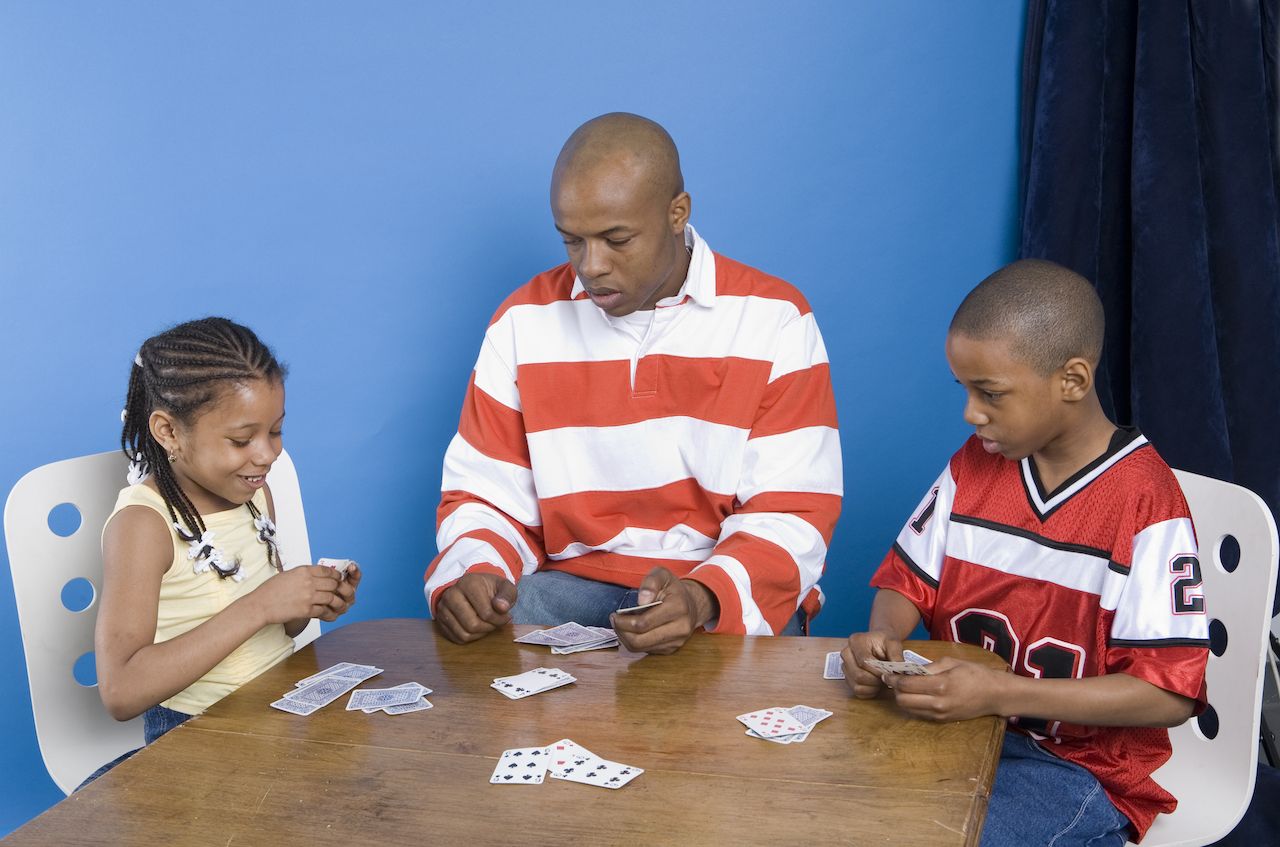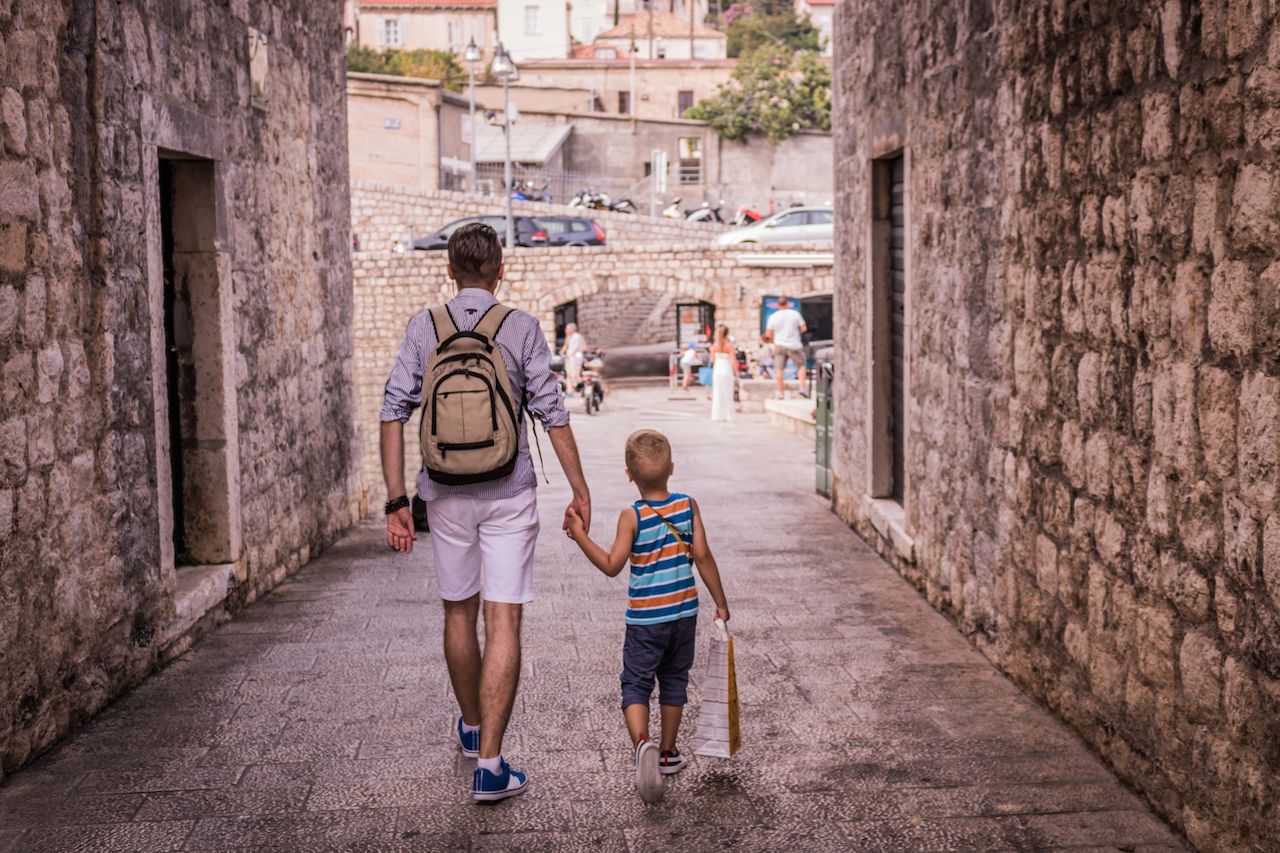Traveling with little kids can sometimes feel like acting out an advertisement for the latest gear. You may find yourself wondering, “Is all this absolutely necessary?” The answer is, probably not.
Sure, traveling with small kids can be a huge joy or a big headache. While the most important thing is attitude, the second most important thing has got to be packing. But whether your trip is a month in South America or a weekend at grandmother’s house in Michigan, you don’t want to spend your precious time and energy being a slave to your kids’, or your own, stuff. Here’s how to prioritize packing what you really need, and how to fight the impulse to just bring too much.
